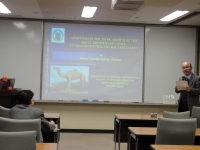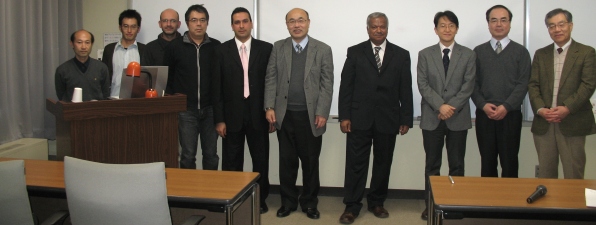| ★ |
Dr. ABDEL-HAMID KAMEL OSMAN Department of Cytology and Histology, Suez
Canal University, Ismailia, Egypt, gave a lecture entitled by “APOPTOSIS
IN THE MYOCARDIUM OF THE ADULT DROMEDARY CAMEL:
ULTRASTRUCTURAL CHARACTERIZATION”. |
・ |
| ・ | ★ |
ABSTRACT Apoptosis is a highly regulated mode of cell death that occurs in the absence of inflammation. Light microscopic (LM) examination of the myocardium of apparently healthy camel did not reveal evidence of apoptosis in any samples; however, evidence of apoptosis was apparent by transmission electron microscopy (TEM). The most common apoptotic features observed by TEM included (1) an intact sarcolemma with some bleb formation; (2) nuclear chromatin condensation and margination with nucleolar disruption; (3) mitochondrial swelling and disorganization, accompanied by degeneration or hypercondensation of cristae; and (4) an intercalated disc region with a higher-than-normal mitochondrion/myofibril ratio, or surrounded from both sides by asymmetrically contracted sarcomeres. Apoptotic alterations were also noted among the endothelial cells lining the microvasculature of the myocardium. These alterations included (1) marked nuclear chromatin condensation and margination; (2) villous blebs on the adluminal plasmalemma, which projected into the lumen; (3) cytoplasmic vacuolation; (4) presence of intraluminal membrane-bounded vesicles; and (5) occasional pericapillary edema and accumulations of cellular debris. The results of this study indicate that myocardial apoptosis can occur in apparently healthy camels, in the absence of a clear-cut etiology. |
||||||





